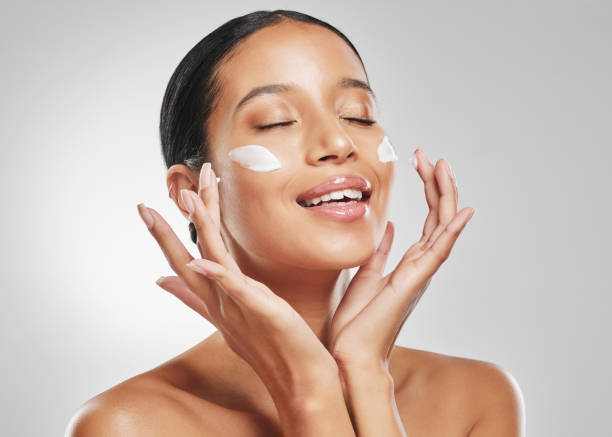
When it comes to safeguarding your skin from the harmful sun’s UV rays and reducing the risk of skin cancer, applying sunscreen correctly cannot be overemphasized. It is your skin cancer’s first line of defense against the detrimental effects of UV radiation, protecting your skin from premature aging, sunburn, and the potential development of skin cancer.
Whether you’re hitting the beach, jogging, or simply stepping out for errands, applying sunscreen correctly is essential to prevent skin damage.
In this comprehensive guide, we will explore seven expert tips that will ensure you know how to apply sunscreen effectively, maximize its protective benefits, and keep your skin healthy.
Before we dive into the expert tips for applying your sunscreen correctly, you must understand how to apply sunscreen based on your skin type.
Article Contents
How to Apply Sunscreen Based on Your Skin Type: Your Personalized Guide to Protection
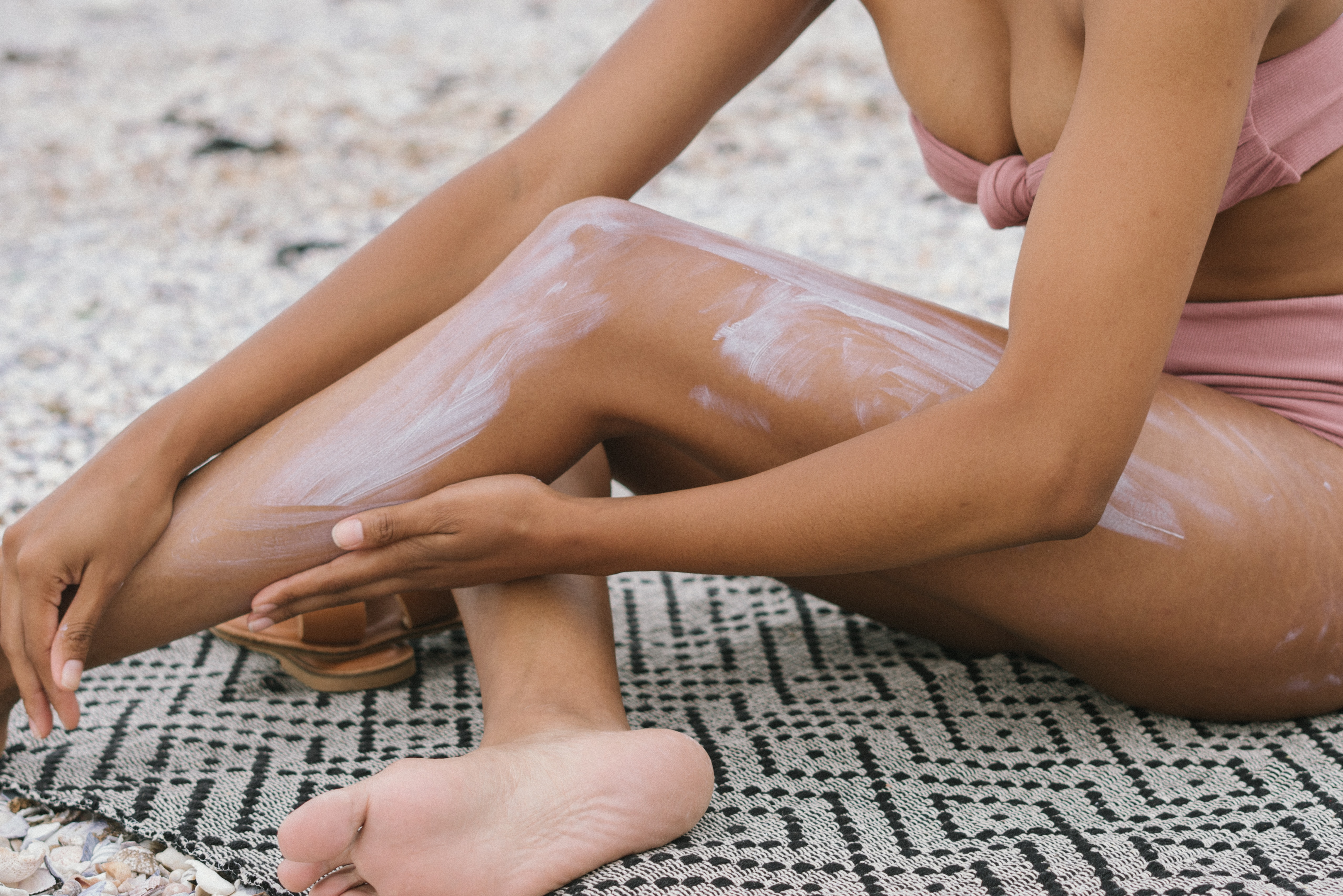
You see, we’re all created differently so our skin type differs and that means your sunscreen strategy should match your skin type like a custom-made suit. Whether you’re rocking sensitive skin or boasting a beach babe tan, we’ve got the lowdown on how to apply sunscreen correctly for your unique skin type.
So, let’s dive in and unlock the secrets to a sun-safe and skin-savvy you!
Sensitive Skin
You’re the queen of the skincare world, and that’s perfectly okay. Opt for mineral sunscreens not labeled “hypoallergenic” or “for sensitive skin.” Look for mineral sunscreen formulas with zinc oxide or titanium dioxide. These gentle giants create a physical barrier, deflecting those harmful rays without irritating them.
Ensure you do the patch test – dab a bit of the sunscreen on a small area to make sure your skin approves before slathering it on.
Oily Skin
You’ve got oily skin? Then you go for oil-free or gel-based sunscreens. These lightweights won’t block your pores or make you feel like you’re wearing a grease mask. Look for the magic words “non-comedogenic” on the label – that’s skincare terminology for “won’t cause pimples.” Your skin will absorb it like a thirsty plant, and you’ll be left with a matte finish that’s ready to conquer the day.
Dry Skin
Reach for sunscreens that double as moisturizers. These beauties pack a one-two punch, shielding you from the sun’s UV rays while giving your skin a drink of water. Look for ingredients like hyaluronic acid and glycerin for that extra dose of skin-quenching goodness. Your skin will thank you for the hydration boost!
Combination Skin
With mixed skin, you can have it all. Like a skincare see-saw, some areas are oily and some are dry. Choose a sunscreen that is non-greasy, lightweight, and won’t tip the balance. Your go-to sunscreens should be gel- or fluid-based. They’ll control the oily parts while still providing your dry areas with the moisture they require.

Normal Skin
The well-behaved skin owners. Your skin type has the freedom to explore different sunscreen textures and formulas. Feel free to pick a sunscreen that aligns with your preferences – lotion, spray, or even a fancy serum.
Just make sure it’s broad-spectrum with an SPF 30 or above. Normal skin is like a blank canvas, ready to soak in that protection and flaunt its natural glow.
Aging Skin
Though the clock may be ticking, your aging skin is changing the course of history! While opting for your sunscreen, look for phrases such as “anti-aging,” “age-defying,” or “wrinkle-reducing.”
Antioxidants, vitamin C, and retinol are some sunscreen ingredients that can help you fight against UVA rays damage and bothersome fine lines. In addition to protecting yourself from sun damage, you are also fighting gravity!
Darker Skin Tones
To our melanin-rich beauties, we’ve got a reminder: Yes, your gorgeous skin has built-in protection, but don’t skip the use of your sunscreen. UV light can still creep into your skin, causing damage you might not even see. Opt for a broad-spectrum sunscreen to ensure you’re covered on all fronts. Look for those with a slight tint or moisturizing properties that complement your radiant skin.
You’ve got an idea of how to apply sunscreen based on your skin type. You don’t want to miss out on the main deal of how to apply your sunscreen correctly based on expert tips.
Let’s dive right in!
Choose the Right Sunscreen Formulation
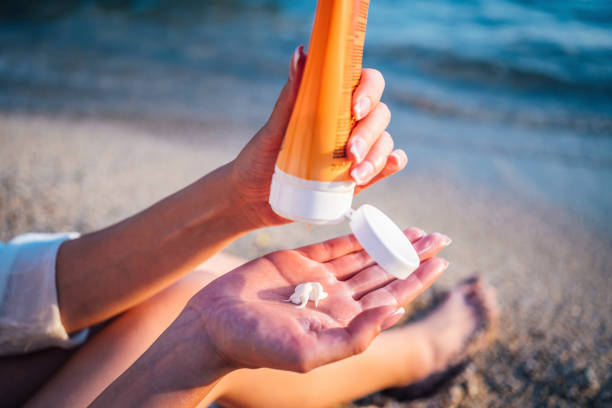
Choosing the correct sunscreen formulation is the foundation of proper sun protection. There are two main types of sunscreens: chemical sunscreens and physical sunscreens, physical sunscreen is also known as mineral sunscreen.
Difference Between Physical and Chemical sunscreens
Physical sunscreen serves as a shield, resting on the surface of your skin and deflecting dangerous UV light. It serves as a layer of armor for your skin. Chemical sunscreen, on the other hand, acts more like a sponge, soaking up UV light and turning it into harmless heat. You can also call it a superhero that prevents UV dangers.
Mineral sunscreens use ingredients like zinc oxide and titanium dioxide to physically block and scatter UV rays.
Both are effective, but knowing the difference between the two can help you choose what works best for your skin.
Understand The Magic of Sun Protection Factor (SPF) and Broad Spectrum Protection
Sun Protection Factor, or SPF, is a crucial factor in determining the level of protection a sunscreen offers against UVB rays. It’s like a magic number that determines how much sunscreen and the strength of your sunscreen.
SPF helps you know how much longer you can stay in the sun without getting sunburned. For everyday wear, sunscreen with an SPF of at least 30 is recommended. However, high and higher SPF numbers offer only marginally increased protection.

Prioritizing Broad-Spectrum Protection for Comprehensive Coverage
When it comes to sunscreen, one size doesn’t fit all. Start by selecting a sunscreen with the label – “broad-spectrum”.
It shields your bare skin from both UVA rays and UVB rays, offering a comprehensive defense against sunburn, premature aging, and irritating sunspots.
Apply Enough Sunscreen
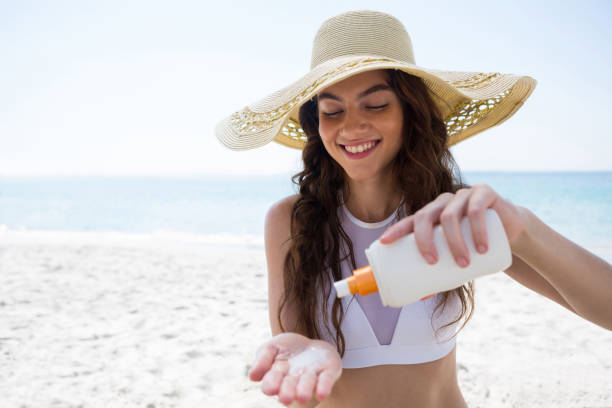
When using your sunscreen, ensure you always apply sunscreen well enough to give your skin more protection.
To achieve the labeled level of protection, you should use about an ounce (equivalent to a shot glass) of sunscreen for your entire body. Don’t forget to apply it generously on exposed skin, including your face, neck, ears, and any other areas that will be exposed to the sun. For your face, consider using a face sunscreen or lip balm with sun protection.
Comprehensive Coverage: Ears, Lips, and Scalp Protection
Your ears might not shout for help, but they need sunscreen too. Those delicate earlobes can burn! Swipe on a bit of sunscreen and blend it in.
For your lips, choose a lip balm with SPF 30 for a double dose of protection. And remember, your scalp can get sunburned too, if your hair is thin or you have a part. A spray of sunscreen or a hat will help cover your scalp.
Gentle Care: Safeguarding the Delicate Skin Around the Eyes

The skin around your eyes is as delicate as a butterfly’s wing, so it deserves some extra tender loving care. Opt for an eye cream with SPF 30 to safeguard against crow’s feet and sun-induced wrinkles.
Spread your sunscreen with care, ensuring it’s evenly distributed. Pat, don’t rub, to avoid disturbing your skin. You can apply as much sunscreen as to how much sunscreen you want every two hours.
Frequent Reapplication and Timing Matters
Do not rush to apply your sunscreen when you’re heading outdoors. It’s best to apply sunscreen about 15 to 30 minutes before stepping out to allow it to fully bind to your skin.
When and How to Reapply Sunscreen: The Time Factor
When it comes to sunscreen, timing is everything. Sunscreen should ideally be reapplied every two hours, especially if you’re spending time outdoors. If you’re engaging in water activities, sweating, or towel-drying, reapplication is even more essential.
After these activities, it’s recommended to reapply sunscreen immediately to ensure continued protection. Keep in mind that even on cloudy days, the rays can still reach your skin, so reapplication remains essential.
Complement with Protective Clothing
While sunscreen is a powerful tool, protective clothing adds an extra layer of defense. Wear wide-brimmed hats, sunglasses that block both UVA and UVB rays, and clothing that covers your arms and legs. Look for clothing labeled with a high UPF (Ultraviolet Protection Factor) for optimal protection.
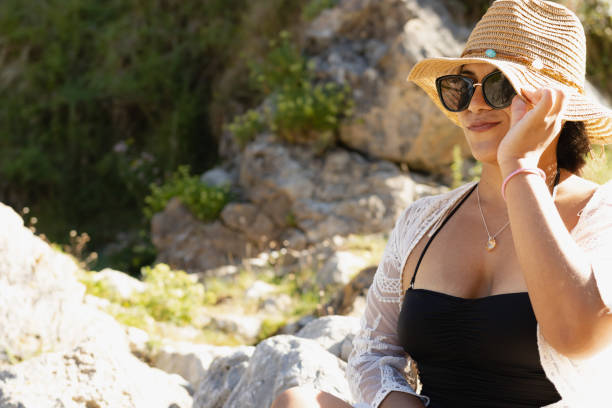
Remember, sunscreen is just one part of your full sun exposure and protection arsenal. Don’t forget to wear sun-savvy attire, including wide-brimmed hats and UV protection sunglasses. Seeking shade during peak hours is also crucial for your sun exposure and keeping your skin safe.
Sun-Savvy Attire: Clothing and Accessories for Extra UV Shielding
Sun-protective clothing made from tightly woven fabrics can provide an additional layer of defense. Don’t underestimate the power of a stylish wide-brimmed hat and those fashionable oversized sunglasses.
Layering with other products
Sunscreen should be the grand finale of your morning skincare routine. After cleansing, toning, and moisturizing, apply sunscreen as the last step before makeup. This ensures that your skin is adequately protected before stepping out into the sun.
Compatibility Check: Using Sunscreen Alongside Other Skincare Products
It’s crucial to ensure that your sunscreen plays well with other skincare products. Generally, sunscreen should be applied after your moisturizer has fully absorbed. Allow a few minutes for each product to set before moving on to the next. If you’re using any treatments or serums, let them absorb completely before you spray sunscreen.
Everyday Ease: Picking Lightweight Sunscreen Formulas
When you’re going about your daily routine, a lightweight sunscreen formula is your best friend. Look for sunscreens labeled “non-comedogenic” to prevent clogged pores and breakouts. These formulas blend effortlessly into your skin, making them perfect for under-makeup application.
Sunscreen Integration with Makeup: A Seamless Approach
For those who love makeup, incorporating sunscreen can be a breeze. Begin with a broad-spectrum sunscreen as your base layer. Allow it to absorb for a few minutes before applying your makeup.
Go For Water Resistant Sunscreen

For those action-packed days, like hiking or playing sports, go for water-resistant and sweat-proof sunscreens. These formulas stick around even when you sweat a lot or take a dip in the pool.
Keep in mind as much sunscreen so that you have to reapply these formulas after swimming or sweating. This helps to maintain adequate coverage of the sunscreen.
Note that, water-resistant spray sunscreen, doesn’t mean the sunscreen is waterproof!
Wrapping Up
Applying sunscreen correctly is a vital aspect of your skincare routine and a key measure to protect your skin from the harmful effects of the sun’s rays. By following these expert tips, you can ensure that you are providing your skin with the best possible defense against skin cancer and UV radiation.
Consistent and proper sunscreen application to part of your skin exposed to the sun, along with regular Esthetician or dermatologist consultations will go a long way in safeguarding your skin’s health and preventing issues like skin cancer and premature aging. So, make wearing sunscreen an integral part of your daily routine and enjoy the outdoors with confidence and peace of mind.
Remember, sunscreen isn’t just a summertime essential—it is a year-round necessity.
Ready to experience the full benefits of sunscreen? Check out our previous article on the best sunscreen products to pair with these expert tips and unlock the ultimate sun protection regimen. Your skin deserves the best. so, explore now!


